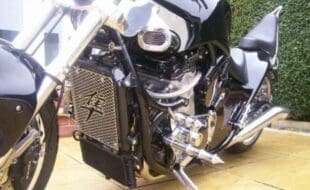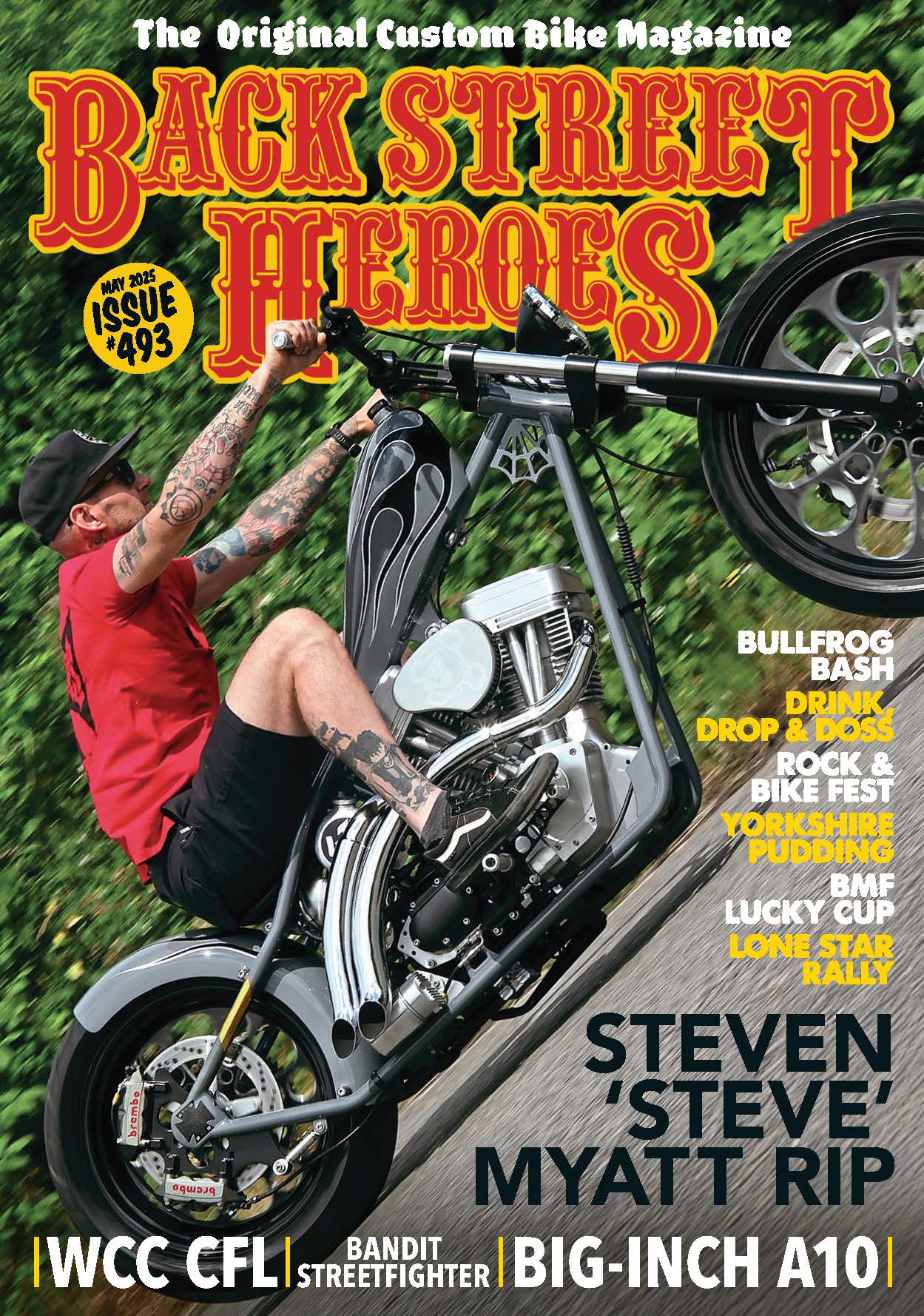The Buell Cyclone wasn’t exactly the prettiest of bikes when it left Erik Buell’s loving hands…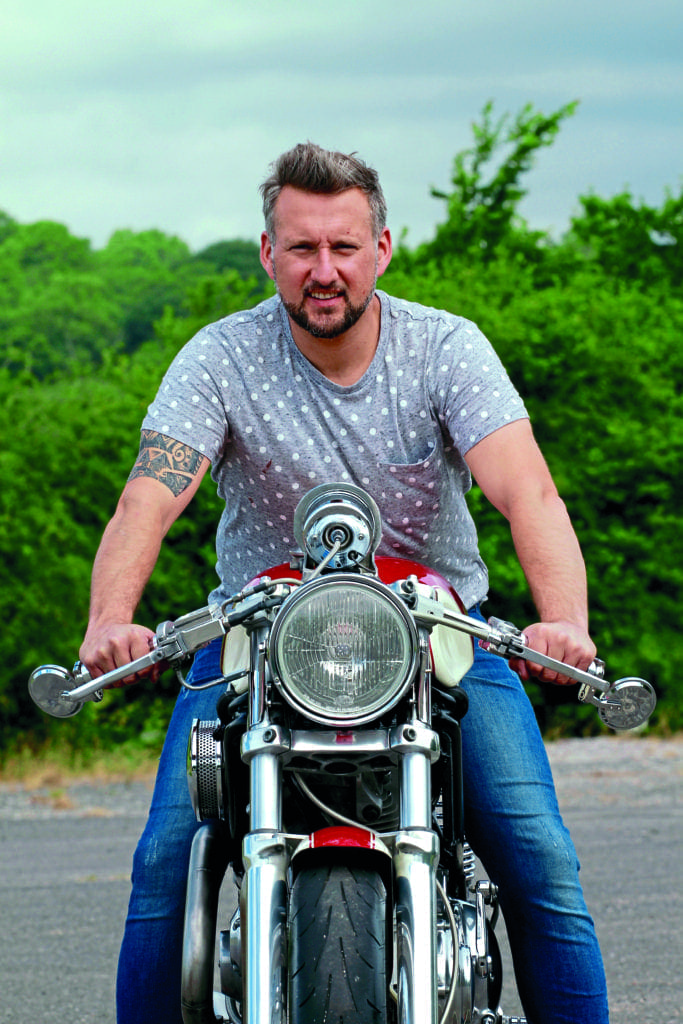
Words: Dave
Pics: Garry Stuart
IT had a long dual seat, deep side-panels and a deeply unattractive big suitcase-style appendage on the right-hand side of the motor that actually contained the air filter, but what this does mean is that it’s quite easy to make one look far better than it ever did as standard, and certainly easier than it would be with the nicer-looking Buells, like the Lightning. Of course, if you want to make a bike really special, then you’re going to need to put in a bit more effort, but with something as iconic as any of the Buell line-up it’s difficult to know just how to make it look cool without taking away its inbuilt ‘Buellness’ and ending up with a bike that just looks like another Sportster. The Cyclone wasn’t as racy or as focused as the Lightning, nor as roomy as the touring Thunderbolt, so it was something of a jack-of-all-trades and, consequently, of the Buell model range was perhaps the most suitable for a bit of customisation.
Enjoy more Back Street Heros reading in the monthly magazine.
Click here to subscribe & save.
Pete Burrows knew that his Buell M2 Cyclone, of 1998 provenance, was going to remain as a Buell, but was also going to be different enough to stand out from any other M2 he’d seen previously. To do so, he wanted to keep several of the design features that Erik had penned, but replace a couple of the slightly peculiar parts that could be seen as only being fitted to the standard bike simply because Mr Buell had wanted to be different, and not because they actually made an improvement. And while he wanted a higher level of sportiness applied to the Cyclone, he didn’t want to just end up with a Lightning replica, so any modifications that he was going to undertake had to be rather different, and indeed they have been.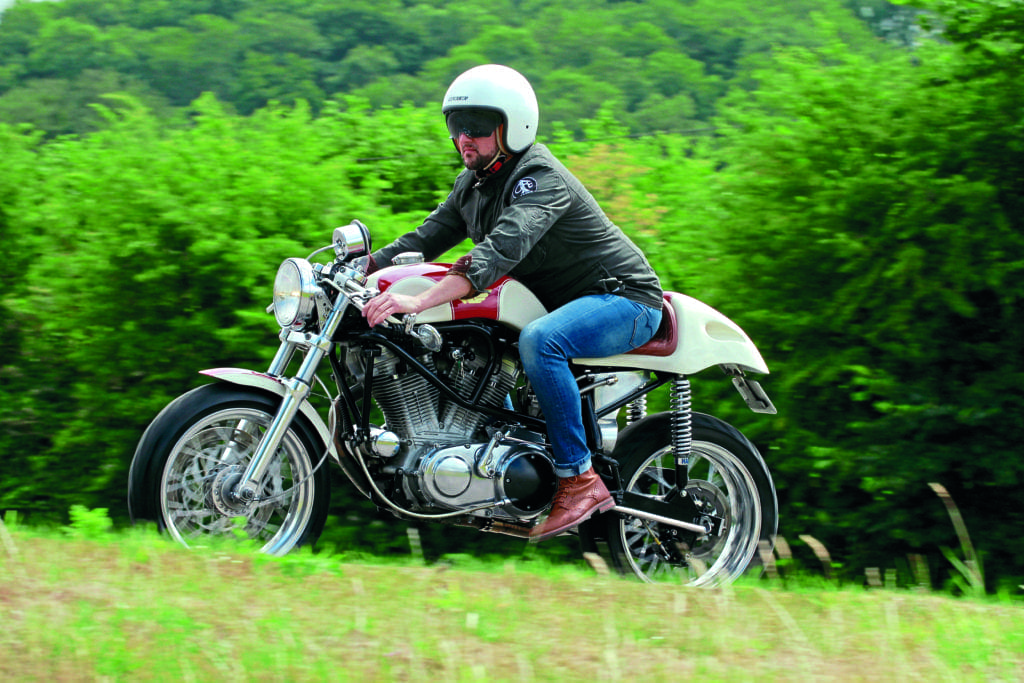
The first step of replacing the massive aluminium standard swinging arm is most certainly not one that most Buell owners’d undertake, for example, but he wanted twin shocks for the cafe racer style look he was after. The stock ’arm is rather suitably beefy, you understand, but it had a single shock absorber underneath the engine, running in a pull configuration rather than the conventional push (according to the factory, it lowered the centre of gravity – always useful on a bike with a tall engine – and a conventional rising-rate arrangement would’ve required a top mount in the same place as the rear cylinder head), but it wouldn’t have suited the style he was after. After removing it, he fitted a suitably modified-to-fit Japanese market Kawasaki Z700 ’arm, and a set of Hagon shocks, and doing this meant that there’d still be room for a battery and, vitally, an oil tank, both of which are normally hidden away under the stock voluminous plastics which, of course, he didn’t want. It also meant that the new shocks’d need a new upper mount apiece which, in turn, necessitated a new sub-frame being made and welded on to the chrome-moly Buell frame. With the original underslung shock no longer fitted, you get a good idea of just how high the hopped-up Sportster engines in the Buells were fitted – little wonder they had significantly better ground clearance than Harleys!
The pointy end has retained the Buell forks, yokes, dinner plate-sized front disc, and six-piston caliper for no other reason than they’re incredibly good parts. The three-spoke Buell wheels’ve been swapped for a pair of classic spoked items, with lightweight aluminium rims, though, as the originals just didn’t look right in his eyes.
So, lightweight spoked wheels, a lusty air-cooled vee twin, a chrome-moly frame – what type of bodywork are you choosing, Pete? It was pretty much a given; a hump-backed fuel cell with a chunky Monza filler cap, and a swoopy tail unit profiled to match the back of the tank – pure cafe racer! 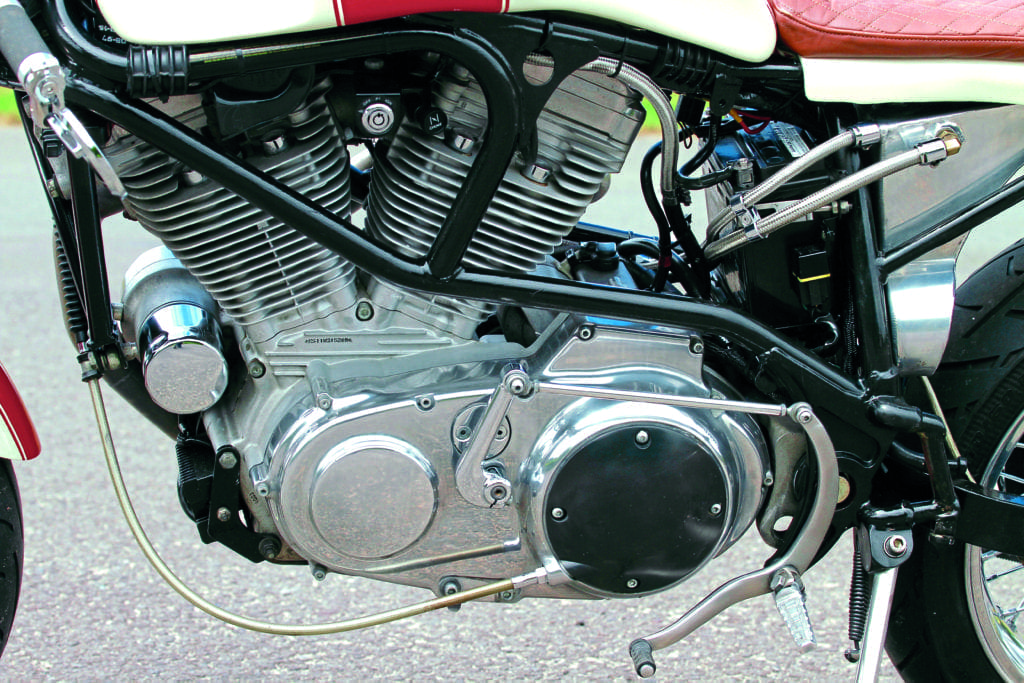 The fuel tank was handmade from sheet aluminium, while the front mudguard was also home-made, albeit from sheet steel, and the tail unit, also home-brewed, was created with a composite of aluminium sheet and fibreglass. He returned to aluminium sheet when it was time to create the oil tank, tucked neatly between the frame tubes, although that is the only part that has remained in its natural form. Once finished, the tank, seat and ’guard were handed over to Tanner Body Repairs in Newport, who laid down a neat white and red design that complements the curves of the panels, and incorporates the Buell Pegasus logo too.
The fuel tank was handmade from sheet aluminium, while the front mudguard was also home-made, albeit from sheet steel, and the tail unit, also home-brewed, was created with a composite of aluminium sheet and fibreglass. He returned to aluminium sheet when it was time to create the oil tank, tucked neatly between the frame tubes, although that is the only part that has remained in its natural form. Once finished, the tank, seat and ’guard were handed over to Tanner Body Repairs in Newport, who laid down a neat white and red design that complements the curves of the panels, and incorporates the Buell Pegasus logo too.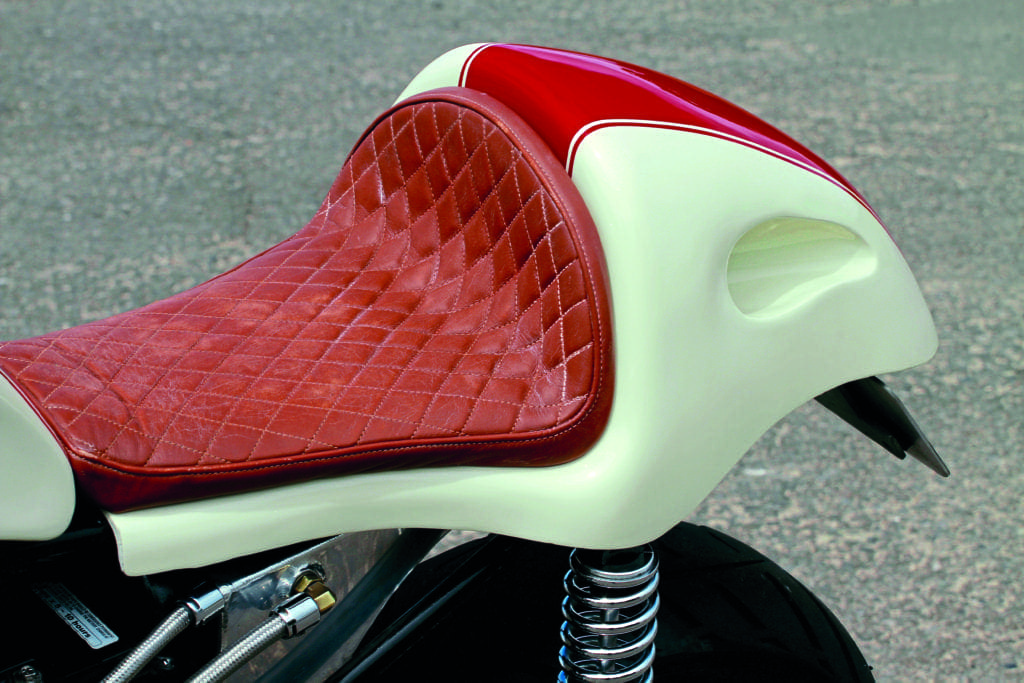
Cafe racers aren’t perhaps the most orthopaedic of machines to ride – while the ’pegs are in the standard position, a pair of aftermarket clip-on ’bars give the requisite race crouch, and the appropriate cafe racer’s need to have a business card for the local chiropractor tucked into your wallet. As Pete himself explains: “If it’s style and discomfort you want, then this is the bike! However, after an uncomfortable 30 minutes in the saddle, your body relaxes and moulds into the riding position!” All the more reason to ride it for longer periods of time then! After all, as we’ve said here before, if we wanted practicality, we’d not be pouring all of our love and attention into custom bikes, would we?



